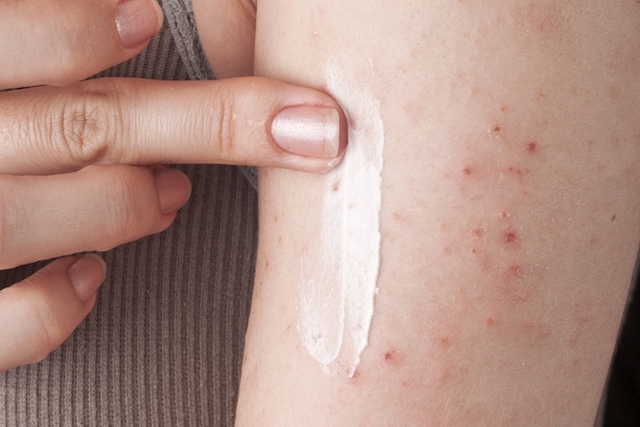- What symptoms
- Possible causes
- How the treatment is done
- Home treatment
- 1. Echinacea extract
- 2. Natural antifungal spray
Beach ringworm, also known as white cloth or pityriasis versicolor, is a fungal infection caused by the fungus Malassezia furfur, which produces azelaic acid that interferes with skin pigmentation, due to the inhibition of melanin production, leading to the formation of spots that are most common on the back and shoulders and that become more visible after sun exposure, due to the contrast with the tanned color of healthy skin.
Generally, the treatment of beach ringworm consists of the application of creams, ointments or lotions with antifungal agents, which should be recommended by the doctor, after making an appropriate diagnosis.

What symptoms
The signs and symptoms that may occur in people with beach ringworm are the appearance of light spots, which are more frequent on the back, chest, neck and arms, skin peeling and mild to moderate itching.
Possible causes
Beach ringworm is caused by a fungus called Malassezia furfur, which can be found on healthy skin without causing the disease, because it only causes the disease when it multiplies.
The most common causes that lead to the development of this fungus on the skin are the hot and humid weather, the weakening of the immune system, hormonal changes or having oily skin.
How the treatment is done
The treatment generally consists of applying creams, ointments or lotions with antifungal in the composition, as is the case with ciclopirox, clotrimazole or ketoconazole, for example. If beach ringworm is severe and does not respond to topical antifungals, it may also be necessary to take antifungal pills such as fluconazole or itraconazole, for example.
Even after the treatment, the skin may continue to have spots, because it takes some time for melanin to be produced in the region of the spots in order to uniform the skin tone. In addition, the infection can come back again, especially when the weather is hot and humid and, in these cases, it may be necessary to undergo preventive treatment, which consists of taking antifungals once or twice a month.
Home treatment
Some home treatment options that can be associated with pharmacological treatment are:
1. Echinacea extract
One way to prevent a beach ringworm is to strengthen the immune system. For this, you can take half a teaspoon of echinacea extract twice a day for 10 days, take a break of 3 days and then repeat another 10 days. Find out more benefits of echinacea.
2. Natural antifungal spray
A good spray that can be used to combat beach ringworm is a spray based on cider vinegar with lavender essential oil, which restores the skin's natural acidity, helping it to become more resistant to fungal growth. Lavender is also antimicrobial and soothes itching and inflammation.
Ingredients
- 125 mL of cider vinegar; half a teaspoon of lavender essential oil.
Method of preparation
Mix cider vinegar and lavender essential oil in a spray bottle and apply once a day, after showering.












